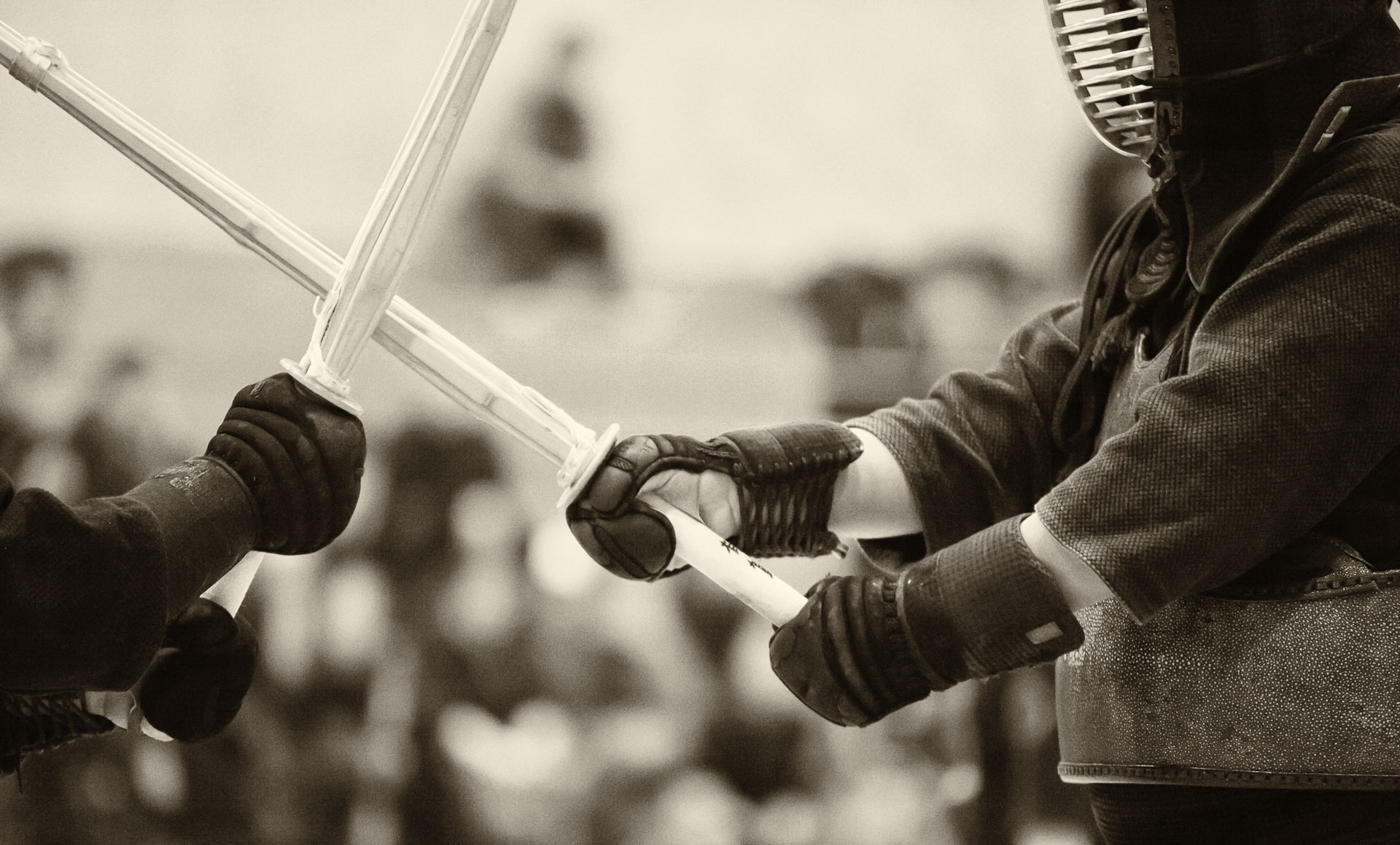
In my experience, apparent sharpness of a photograph depends not only on the quality of the lens and precise focussing, but also on correct exposure. This issue came up recently in an email exchange with a photographer friend, who shot the same kendo tournament as I did, using an identical camera (Canon EOS-1D X.) We captured some images that were nearly identical, but noticed that the sharpness appeared to be different, depending on the exposure level. The darker, under-exposed image looked softer than the one that was exposed correctly.
There are several factors that contribute to apparent sharpness. Of course, obtaining correct focus is of primary importance. Camera shake and motion blur (due to slow stutter speed) also result in loss of detail. If the image is under-exposed, the details are lost because of the low contrast, not because of the missed focus.
When photographing indoor sports, achieving correct exposure while maintaining fast stutter speeds that are necessary for freezing the motion requires a combination of “fast” lenses (ones with large maximum apertures) and high ISO settings. The drawback of using high ISO is that it increases noise in the photo, which also leads to loss of detail. However, I generally find that noisy, but correctly exposed, images look sharper than under-exposed ones even if the actual amount of detail is the same.
It should be noted that both the exposure and noise can be corrected n post-processing, to some degree. Having this ability to adjust images post-factum is the main argument for shooting in RAW format. Having said this, I find myself shooting JPEGs more and more often, particularly if the lighting conditions do not change (which is true in the case of indoor sports), and I am confident that I can obtain a “good enough” exposure during shooting (checking the histogram on the LCD screen periodically throughout the shoot is still a good idea).

























